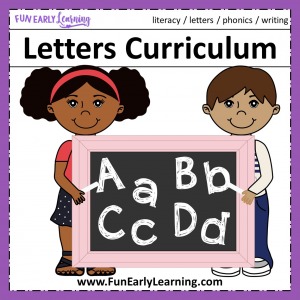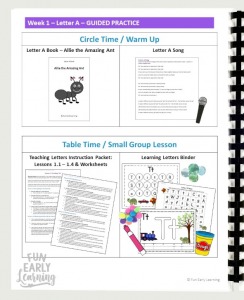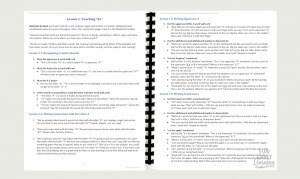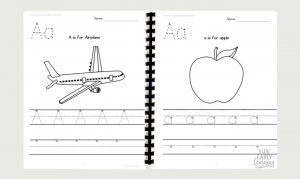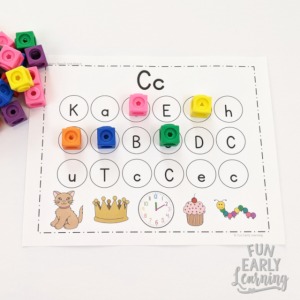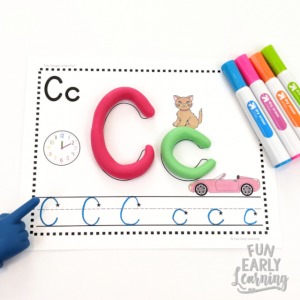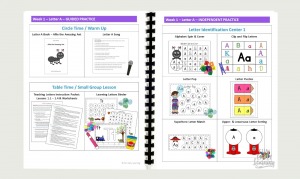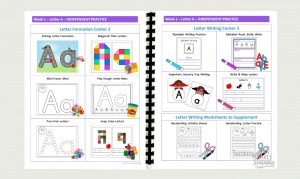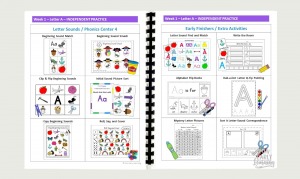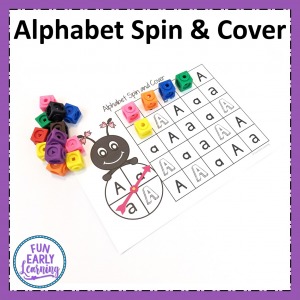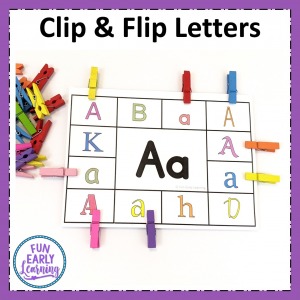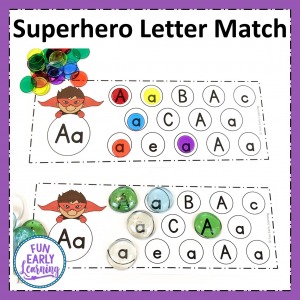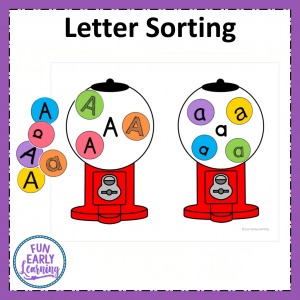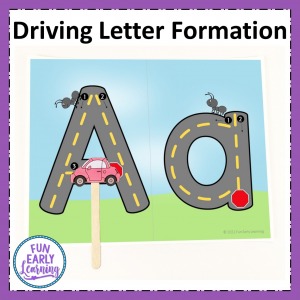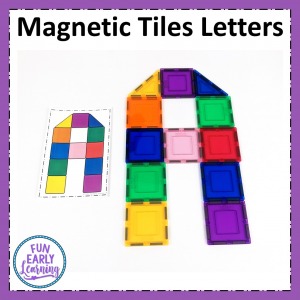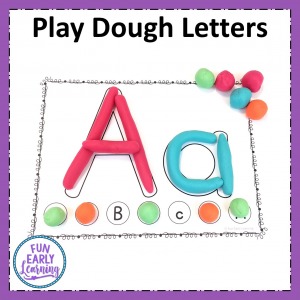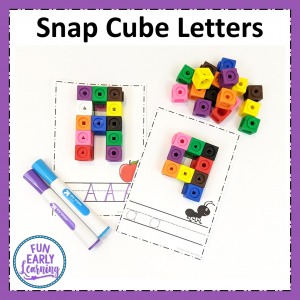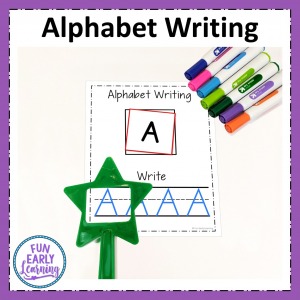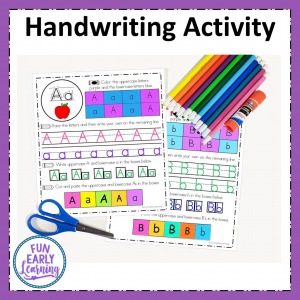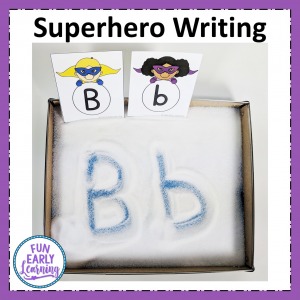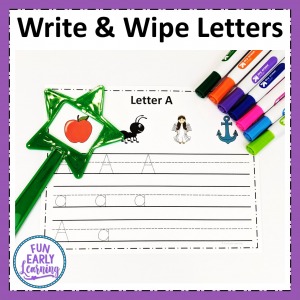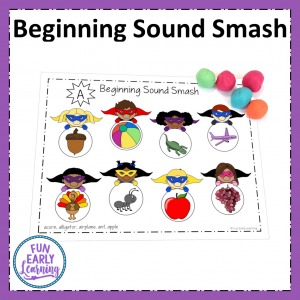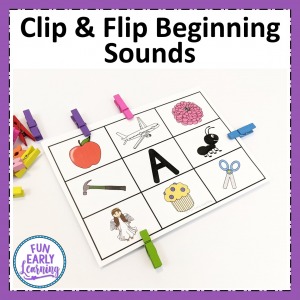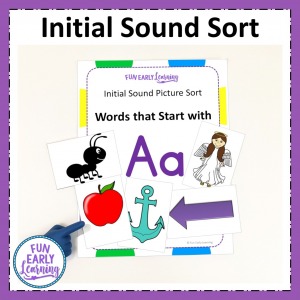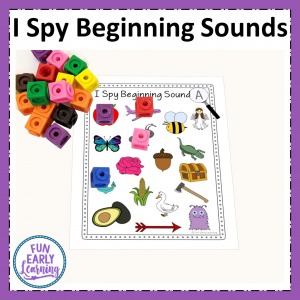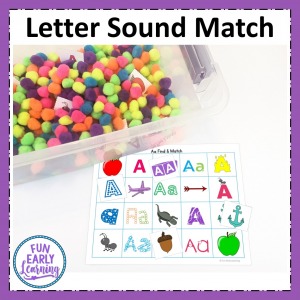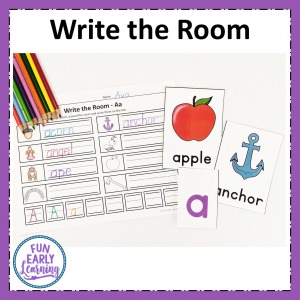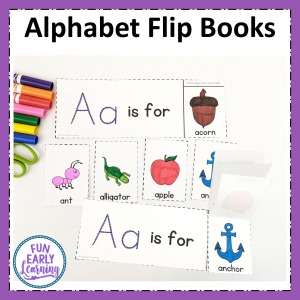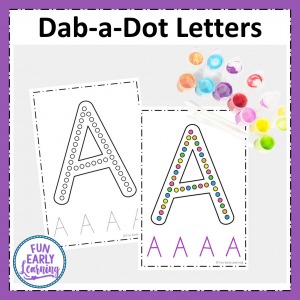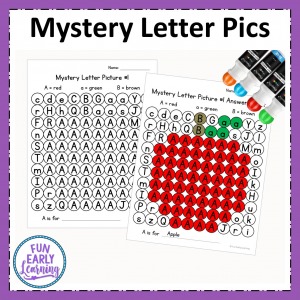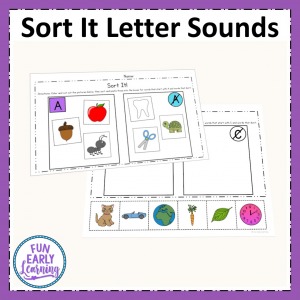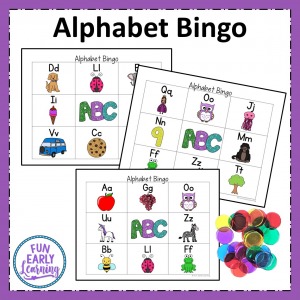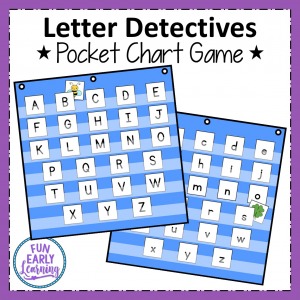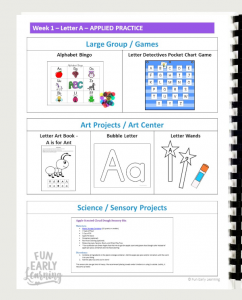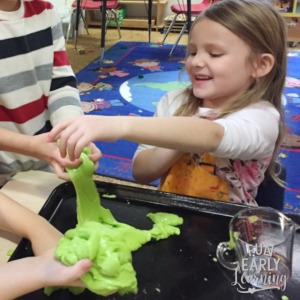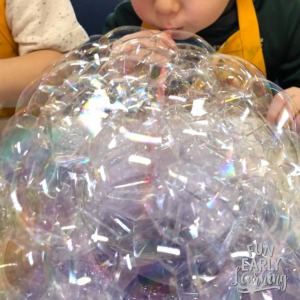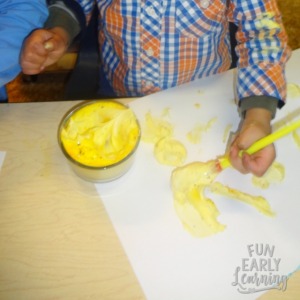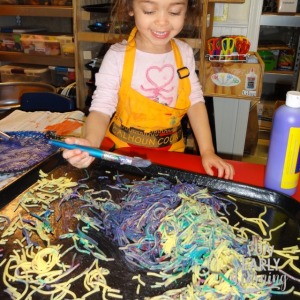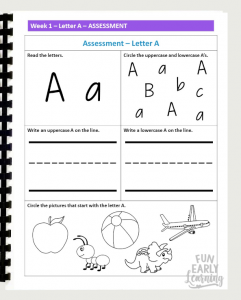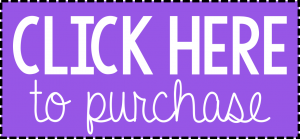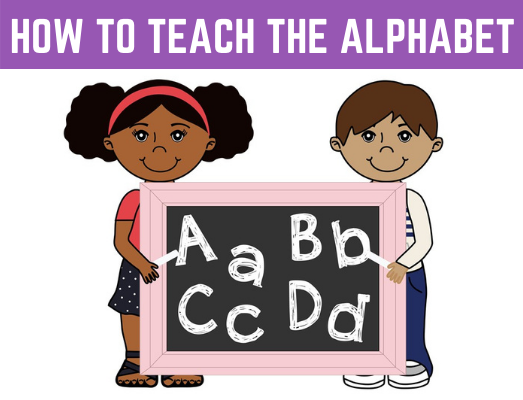
If you have been part of my learning community for a while, you know that I am all about making learning fun and engaging. I am extremely passionate about giving children a love for learning and a solid educational foundation. The alphabet is one of my favorite things to teach children. I love when everything clicks together and I see them go from identifying letters, to letters sounds, to reading. It truly makes my teacher heart happy.
I know that teaching the alphabet and reading can be stressful and overwhelming for teachers, students, and parents. It’s hard to know where to start, and what materials to use to engage different learners. I have been able to help so many teachers learn how to teach letters and engage their littles with my Letters and Phonics Alphabet Curriculum. It has everything you need in one place to teach letters and phonics. It is critical that children properly learn letters, letter sounds, and phonemic / phonological awareness to have a solid foundation for reading.
The Letters and Phonics Alphabet Curriculum is packed with guided lesson plans, hands-on activities and centers, art projects, science and sensory experiments to help your students master the alphabet. It is a 26 week program that goes from letter recognition and identification to letter sound correspondence and letter writing. Your students are going to love these alphabet activities for preschoolers and kindergarten.
What’s Included in the Letters and Phonics Alphabet Curriculum
- Detailed Calendar with pictures and text
- Scripted Lesson Plans
- Assessments for each letter
- Circle Time / Large Group Instruction (Guided Practice)
- Table Time / Small Group Instruction (Guided Practice)
- Letter Identification Center with 6 Different Activities (Independent Practice)
- Letter Formation Center with 6 Different Activities (Independent Practice)
- Writing Center with 6 Different Activities (Independent Practice)
- Letter Sounds / Phonics Center with 6 Different Activities (Independent Practice)
- Early Finishers Extra Activities with 6 Different Activities (Independent Practice)
- Large Group / Games (Applied Practice)
- Art Projects / Art Center (Applied Practice)
- Science and Sensory Projects (Applied Practice)
How Letters are Introduced to Teach the Alphabet
I teach letters and letter-sound correspondence simultaneously to help children start reading as soon as possible. I start by teaching letters that occur most frequently in simple words, such as a, t, s, m. Letters that look alike and have similar sounds are separated to avoid confusion.
This is a 26 week curriculum with one letter introduced each week. This can easily be altered if you would like to introduce more than one per week. I have several students who can easily learn 2-3 new letters per week. By starting with one letter per week, it gives you the flexibility to move at the pace your class needs instead of rushing through the alphabet. It’s important that we focus on mastering letters and phonics to build a solid foundation.
Letters: Scope and Sequence to Teach the Alphabet
Here is the order in which letters are introduced in this curriculum (you can alter to fit your needs):
A, T, S, M, D, I, F, R, P, O, N, L, E, C, U, G, H, V, B, K, W, X, Y, Z, J, Q
Here’s a Peek at SOME of the Activities in the Letters & Phonics Alphabet Curriculum:
Calendar
This curriculum includes a detailed calendar with pictures and text. This is a large file since it is a 26 week program. I prefer to print the calendar and have it spiral bound so I can easily see the lessons and materials needed. If you prefer not to print this document, you can easily pull it up on your computer or tablet to refer to each lesson.
Circle Time
Circle time is included every day with the same activities. It’s a great way to start off the day with children and prepare them for what they will be learning throughout the day. Each day includes a book and song that focuses on the letter we’re learning that week.
Small Group Instruction
Now that you have warmed everyone up and introduced the letter during circle time, it’s time to work with smaller groups. This allows you to differentiate your students based on their individual needs and tailor the instruction to them. Small Group Instruction is where you will use the Guided Lessons to reinforce letters and their sounds. The students will work in their workbook and complete hands-on activities.
Guided Lessons
This curriculum includes detailed guided lesson plans for easy instruction. These lessons cover letter and sound recognition, making connections with the letter, and writing uppercase and lowercase letters. These lessons include scripted instructions on what to say as you introduce each letter / sound. For example, “This is the letter B. It is called uppercase B or capital B. It makes the sound /b/…”
The scripted lesson helps teachers, substitute teachers, and parents know EXACTLY what and how to teach. That can be one of the most overwhelming things for people. The scripts are there if you need them. You can also use them as a guide on what to teach, but use the language and way that works best for you.
Student Workbook
Children will work in their workbook each week. There is one page for each uppercase letter and one page for each lowercase letter.
Learning Letters Hands on Activities
During guided instruction, children will work in the learning letters binder. This will help them to reinforce the skills you are targeting. There are six activities for each letter. I prefer to store these activities in page protectors in a binder. You could easily print on card stock or laminate the pages.
Letters and Phonics Centers
This curriculum has 4 center stations included with six activities per center. The centers are broken down by skill taught: Letter Identification Center, Letter Formation Center, Letter Writing Center, and Letter Sound / Phonics Center. The hands-on activities included in each center keep children engaged and learning. You have to make learning fun to get kids excited and wanting to learn. That’s what this entire curriculum does.
Letter Identification Center
There are 6 activities included in this center to master letter recognition and identification.
Letter Formation Center
There are 6 activities included in this center to master proper letter formation.
Letter Writing Center
There are 6 activities included in this center to master writing uppercase and lowercase letters.
Letter Sound / Phonics Center
There are 6 activities included in this center to master letter-sound correspondence and beginning sounds.
Early Finishers / Extra Activities
Six extra activities are included for you to use as needed. These are great for children who finish centers early or for those who need additional intervention. There are four no prep worksheets that you can also send as homework.
Large Group / Games
Children love doing activities with the entire class. This curriculum has two activities that you can do as whole group or small group. They allow children to apply the alphabet skills they have been learning.
Art Projects / Art Center
Children absolutely love art time. It’s a great way for them to have fun while being creative. Three different art projects for each letter are included each week.
Science and Sensory Projects
STEM is so important in the classroom. Even when teaching letters, we try to use STEM activities whenever we can. When I teach the alphabet, I love to use science experiments and sensory bins. It helps bring learning to life and children love it. This Letters and Phonics Alphabet Curriculum includes one experiment or sensory bin per letter.
Assessments
I know that assessments are usually a teacher’s least favorite thing to do. I get it. It is hard to make them fun. I have tried to make the assessments as painless as possible while allowing you to gather the information you need. There is one assessment per letter in this curriculum. They are in the calendar at the end of each week. It covers uppercase and lowercase letter identification, letter writing, and letter sound correspondence. Everything children need to know for a solid reading foundation.
Providing one assessment per letter allows you to ensure your students have mastered the letter before moving on to the next. This gives you the ability to do intervention as needed.
Other Things to Know About this Letters and Phonics Alphabet Curriculum
Customize to Your Needs
This curriculum focuses on one letter per week. I have found that to work best for me. Some teachers prefer to teach more than one letter per week. That is okay too. The great thing about this curriculum is that it is designed for you to use as you need. If your students are moving through the lessons fast, it may be good to teach more than one letter that week. If you have students who aren’t quite grasping the skills, you can slow it down.
I have the lesson plans set up to teach the letters out of order. Honestly, this is my personal preference for what works best based in my experience and research. If you would like to teach the alphabet in order from A-Z or in any other order, this curriculum allows you to do that.
Quality over Quantity
It is very important for children to master letter identification and letter sounds to have a strong foundation for beginning reading. That is why I teach one letter per week to give ample practice. Please be patient with students as they are learning the alphabet. It can be very difficult for some and others may soar through the lessons. It’s all about making sure each student has a solid foundation before moving them forward. This Letters and Phonics Alphabet Curriculum has additional activities you can use as intervention or to send home for extra practice.
Practice and Review
We always want to make sure that children are retaining and applying what they are learning. It is good practice to include letters that you have previously learned into your center rotations so children can continue to practice them. The large group games help reinforce retention as well.
Keep it Fun
You all know that I am so passionate about creating a love of learning for children. Activities must be fun and engaging. Changing the learning centers out regularly helps to keep children excited. It also engages their long-term memory to help with retention. Although I have included six activities per center, feel free to use just the ones that you feel will work best for your students.
Questions?
It can be a lot of work and overwhelming to teach the alphabet to children. This Letters and Phonics Alphabet Curriculum truly has everything you need to teach the alphabet successfully. Children will gain a solid foundation and understanding of letters and phonics to prepare them for beginning reading. If you have any questions about this curriculum, please reach out to me at Kari@FunEarlyLearning.com. I’m happy to help in any way I can. We’re in this together! ?


